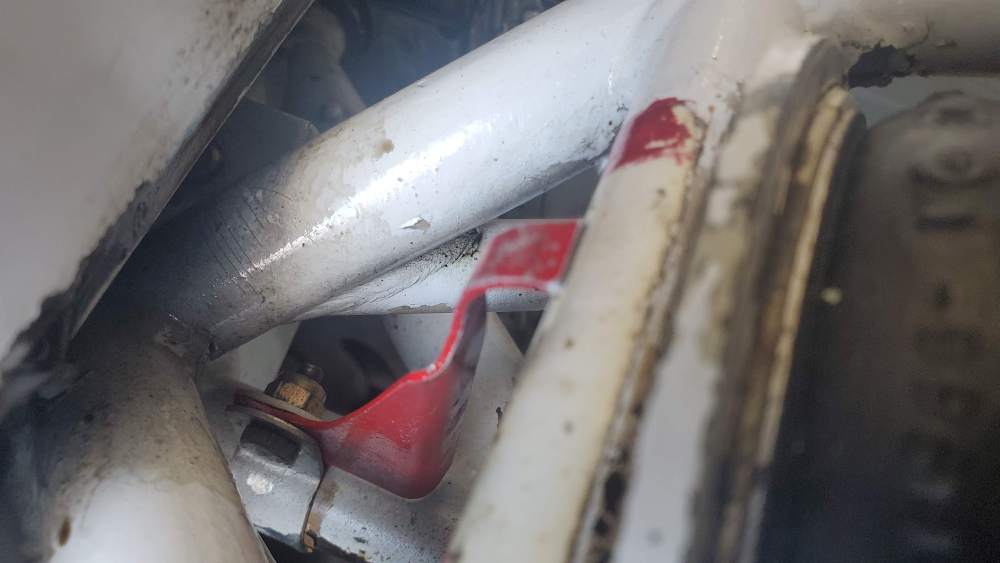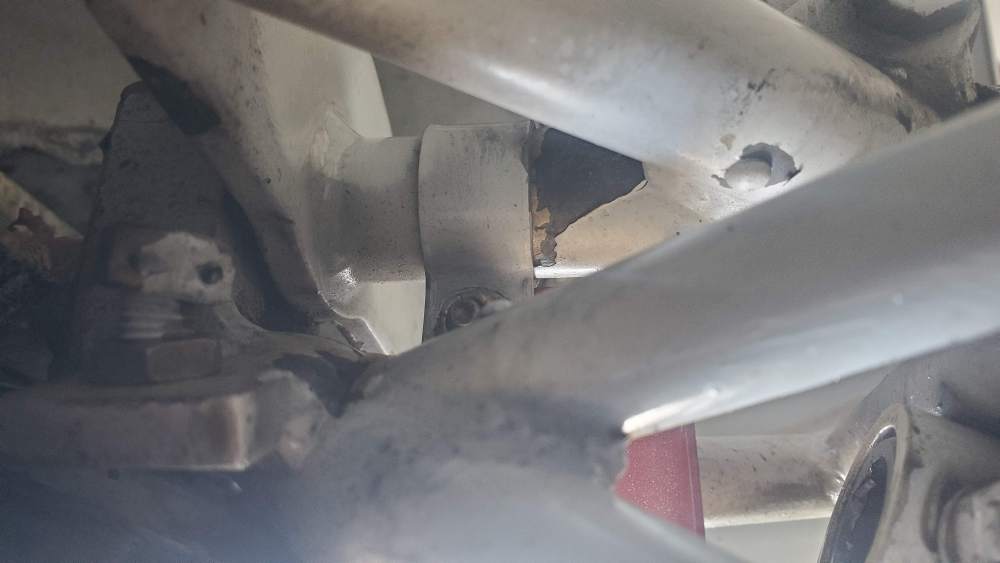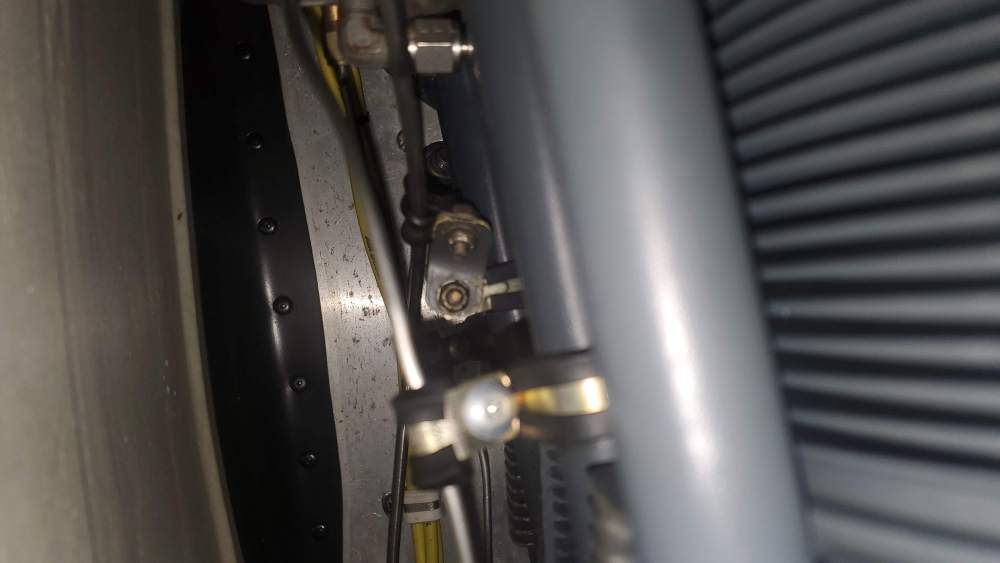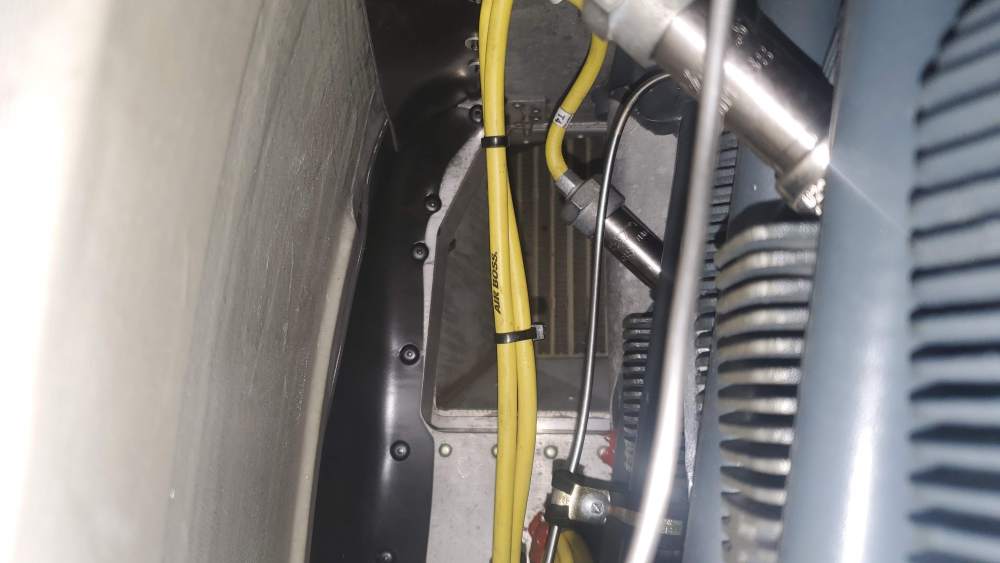
Tim Jodice
Basic Member-
Posts
530 -
Joined
-
Last visited
-
Days Won
3
Content Type
Profiles
Forums
Blogs
Gallery
Downloads
Media Demo
Events
Everything posted by Tim Jodice
-
That is an awesome idea! An hour and a half of playing around was enough for one day. That is for next time.
-
With all the time I have to do nothing constructive at work and having been a week since my last flight I decided to find out first hand what it is like gliding in a J Mooney. This was with, myself, 40 gallons of gas and about 80 pounds miscellaneous stuff. Bright sunny days with calm wind. The most important thing to me was to see the difference between a stopped prop and windmilling one. Starting at 12,500 I pulled all of the knobs back and slow down enough to stop the prop. Prop Stopped 700 fpm at 90ias 600 fpm at 70ias 400 fpm at 65ias Windmilling prop knob all the way out. 500fpm at 65ias 700fpm at 70ias 800fpm at 90ias 50 rpm more with the throttle open I didn't bother getting high rpm numbers because there is no debate that it creates more drag. What did I get from all of this? I know that the flat plate drag of a prop is 100fpm less than a spinning one. It takes about 1500 feet and 120 ias to air start the engine. The difference between going from 130 to 90 by doing a zoom climb as opposed to just letting it bleed of while hold altitude is not much different. Unless you are planning on it like I was it would be at least a few seconds before you would take action. I think I would spend the short time slowing down to best glide by going through the memory items emergency list. I also learned I would never stop the prop during a real engine failure. Why? 1st reason is I found it hard to do, it took me 3 tries to stop it. The first 2 times I slowed down to fast and stalled before the prop stopped. The third time I slowed down slow enough that I was just about to stall held it there and given enough time it finally slowed down and stopped. 2nd it was ideal conditions, I was at about 11,500 by the time I got it stopped, over an airport, day, VFR and it was the only task at hand. Add IFR, night or passengers and all the other stuff going on during a normal non training flight. Maybe if I was in a turbo mooney with 20K+ feet to loose and it might mean I make land or glide past a mountain but for me at my usual 7-8K feet it is not worth it in my opinion. I know there are all kinds of mathematicians on here so have fun! https://flightaware.com/live/flight/N5812T P.S during all of this I heard about 4 or 5 other aircraft. I am so used to hearing a lot of talking on the radio I checked in with Boston make sure my radio is ok. Her response "you are my only customer right now".
-
Newer models came from the factory with stops, replacements from Lasar have them also. As many have said and my experience this weekend they can still be damaged.
-
The stop bolt is bent and opposite the bolt bracket the pipe is bent where the paint is blistered. I couldn't get a good side picture. The stops help but as many have said with the leverage of a tug connected to a 10 foot universal tow bar it moves the bend/break somewhere else.
-
-
Sun n Fun in the time of Coronavirus
Tim Jodice replied to TGreen's topic in Miscellaneous Aviation Talk
I went to the grocery store about 2 hours ago. All the food you could want is available. Toilet paper, not so much. Why? If I had a panic attack I can't imagine that having alot of toilet paper would make me relax. -
1998 Mooney Encore - FIKI and Aspens
Tim Jodice replied to Parker_Woodruff's topic in Aircraft Classifieds
I love my M20J but once you go turbo it is hard to go back. Not because you regularly blast up to 25K feet but to avoid/get through ice, better hot and high performance and to be able to run LOP while still making 65%+ power at almost any altitude. That said I agree with you about overhaul and engine maintenance and that is why I bought a M20J. In my case (and many others) living at sea level doing 100-150NM trips none of these benefits are very useful to me. -
I love this post and agree 100%. I just turned 40 this year I have been flying for 14 years and airplane owner for 8. After renting for years and having so much fun flying I wanted my own airplane bad. At 32 I sat down with a pen and paper and wrote down everything I spent money on. I realized that I was living a typical but in my opinion now wasteful lifestyle. In the coming months I stopped eating out all the time, having a new car and just buying crap I really didn't need. A penny saved is a penny earned right? Eliminating all of the wasteful spending allowed me to buy my first airplane, a $38K 1955 Bonanza. Then and now I don't have any other hobbies or activities that I do so all of my disposable income is/was flying. Fortunately now I get to fly to work. When I bought my first airplane I was an auto mechanic working for someone else making $55-60K. You don't need to make a lot of money IF it is important to you. I have told and shown people that owning an airplane is not out of reach. Stop the daily 5 dollar coffee 20 dollar lunch and maybe skip a phone generation or two and drive a 10 year old car. It is amazing what it cost to live a normal social life today. iPhone 18 anyone? For the price of a new F150. https://www.controller.com/listings/aircraft/for-sale/30079661/1963-mooney-m20c Nice way to start flying!
-
Would it ever make sense to design a clean sheet airplane? https://www.google.com/amp/s/generalaviationnews.com/2012/09/09/the-cost-of-certification/amp/ Says it costs $1 Million so add another million for avation reality. Would it make sense if it: *Cuts build time drastically say in half or better. I forget the numbers but a Beechcraft Duchess cost alot less to build than a Travel air. I would think that was a big reason the went through the certification process to make a new airplane that does the basically the same thing. *Is able to go 210 KTS TAS on about 300-350 HP naturally aspirated or 250-260 with a turbo. Or 190KTS *Can sit 4 overweight Americans comfortably and their baggage say approximately 1000 payload and enough gas to go 600-700 miles while typically equipped, TKS, A/C etc. *A Chute in the design from the beginning. *All of that while using NON disruptive technology. *Structurally out of Aluminum and composites where necessary to reduce labor. *Off the shelf Lycoming or Continental engine *These are are the obvious things I think many would look for. *Figure $700,000-$900,000 a piece. Crazy? I dont think so. Cirrus can't build them fast enough. Last summer I looked at buying a SR20 and had I ordered one I would not have seen it until this fall. *Same price as a Cirrus but it would need to do EVERYTHING better than a Cirrus. Possible?
-
+1 Buying a actively flown Johnson bar C model is hard to beat. Lowest maintenance, 180 horsepower= lowest fuel burn and the most durable AND least expensive engine. Even with only 180HP at just under 2600 pounds it has a better power to weight then newer J models.
-
That's amazing! I spent almost $800 on landing gear discs alone
-
I had my prebuy and annual done at Leland aeroservice in Nashua NH. I bought a 1985 J. I paid 130K. Call me if you want more details. 603 571 7111 Tim
-
Not yet. At 200 hours SMOH I hope not!
-
I spent $275
-
It is typical to hear people say that there first annuals revealed suprises and was expensive and I wanted to share that that is not always the case. The prebuy turned up the main gear shocks were bad and that was the most expensive single repair. Before the annual I had to replace the muffler. According to the logs it was original. It is likely was not maintained by a shop that was good with Mooneys because everything except for the elevators were out of rig including the gear. He also found that the nose gear truss was assembled wrong making it a little squirrelly on the ground. I started a thread awhile back when I had just bought it I complaining about its speed because my friends unmodified F went faster. Naturally rigging everything helped In speed quite a bit and a little in climb. I did quite a bit of elective work to hedge against unscheduled repair. I replaced the brakes, tires/tubes, massive to fine wire plugs and replaced the regular landing light with an LED even though the all were ok at the time of annual. I also replaced the baffles because the old ones were in ok shape I would say a 5-6 out of 10 it made a noticeable improvement in cooling. Only the summer will tell. If it isn't obvious I am super excited about this airplane! I put 86 hours on it before annual. Moral of my story is having a prebuy done by a shop that regularly work on Mooneys should prevent expensive suprises on your first annual. It certainly did for me. Like they say you get what you pay for.
-
I replaced the baffles in my J with a kit from Guy and they fit beautifully! Hoses and baffles Guy is your man!
-
Mine does have wing tips. If it is the newer actuator what problems does it have?
-
What is considered an early J model? Mine is an 85.
-
Peak and lean of peak horsepower?
Tim Jodice replied to Gary0747's topic in Vintage Mooneys (pre-J models)
Why would you ever be at 2900 RPM? I suppose if you slam the throttle open you will get a brief overspeed. Where does 2900 RPM for 5 minutes before cruise at 2700 come from? -
Peak and lean of peak horsepower?
Tim Jodice replied to Gary0747's topic in Vintage Mooneys (pre-J models)
Choices regarding RPM and LOP/ROP Referencing the POH at 7500 feet WOT, 2500RPM using 10.8 GPH is 75% power. This give me 155 Knots WOT 2700RPM 10.2 GPH also gives me 155 knots with slightly cooler CHTs maybe 10-15 degrees. I am about 20-30LOP. Using 14.9HP per 1GPH LOP for NA engines I am making about 75% power. All of this makes sense to me 75% ROP or 75% LOP= 155 knots The part I can't understand is that many have said the propeller is most efficient at 2500. If that is so why am going the same speed on the same power spinning the propeller faster? -
Peak and lean of peak horsepower?
Tim Jodice replied to Gary0747's topic in Vintage Mooneys (pre-J models)
Question regarding propeller rpm efficiency. How much more efficient is it at 2500 than 2700? Based on this, https://warpdriveprops.com/propspd2.html A typical 74" Mooney propeller at 2700 RPM is nowhere near having a tip speed that would cause a loss in efficiency. Are there other reasons? -
Peak and lean of peak horsepower?
Tim Jodice replied to Gary0747's topic in Vintage Mooneys (pre-J models)
HP/GPH is always directly related to compression ratio. A higher compression ratio extracts more energy out of the fuel. A 150HP to 160HP STC for a 172 with a O-320 simply increases the compression ratio to get the 10 hp. A downside is you can't run Mogas in the 160 HP The not so popular 10:1 compression ratio stc for Mooneys makes more power because of the Compression ratio. The lower compression ratio in turbo engines is mostly if not entirely for detonation margin. A V35B and TC Bonanza came with a 520 making 285HP. The turbo model needed an extra 2.5" to make up for the lower compression ratio. -
Are they truly autonomous? As in they make all of their decisions on their own.








